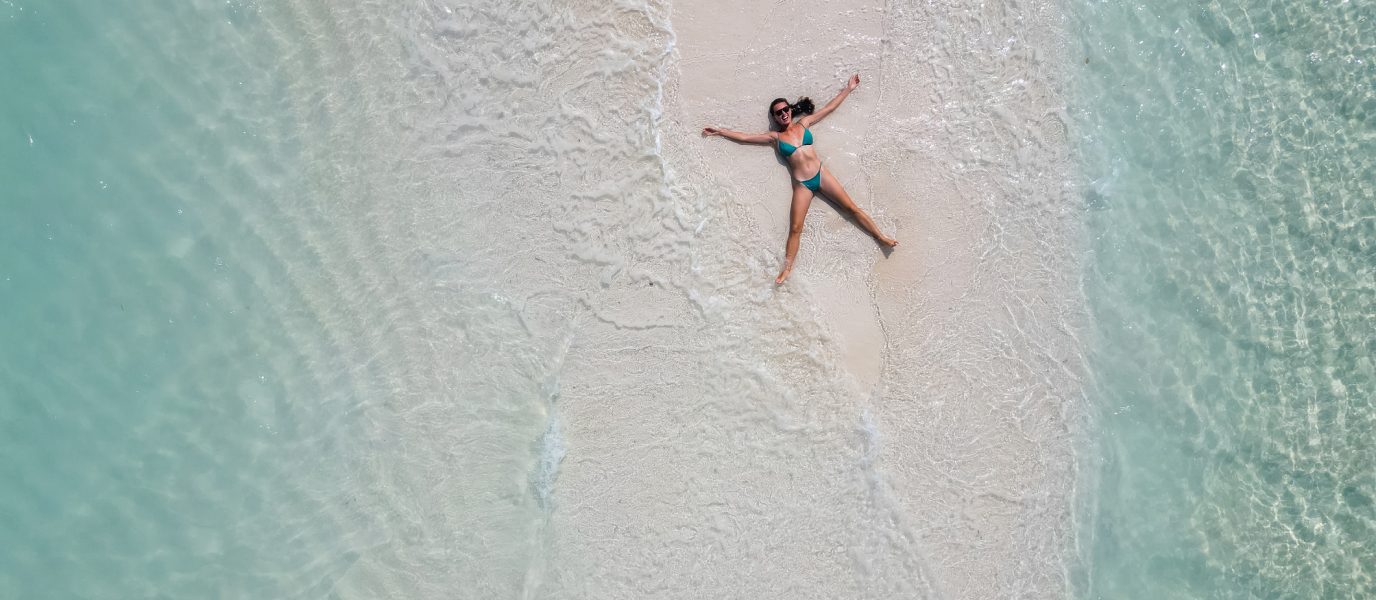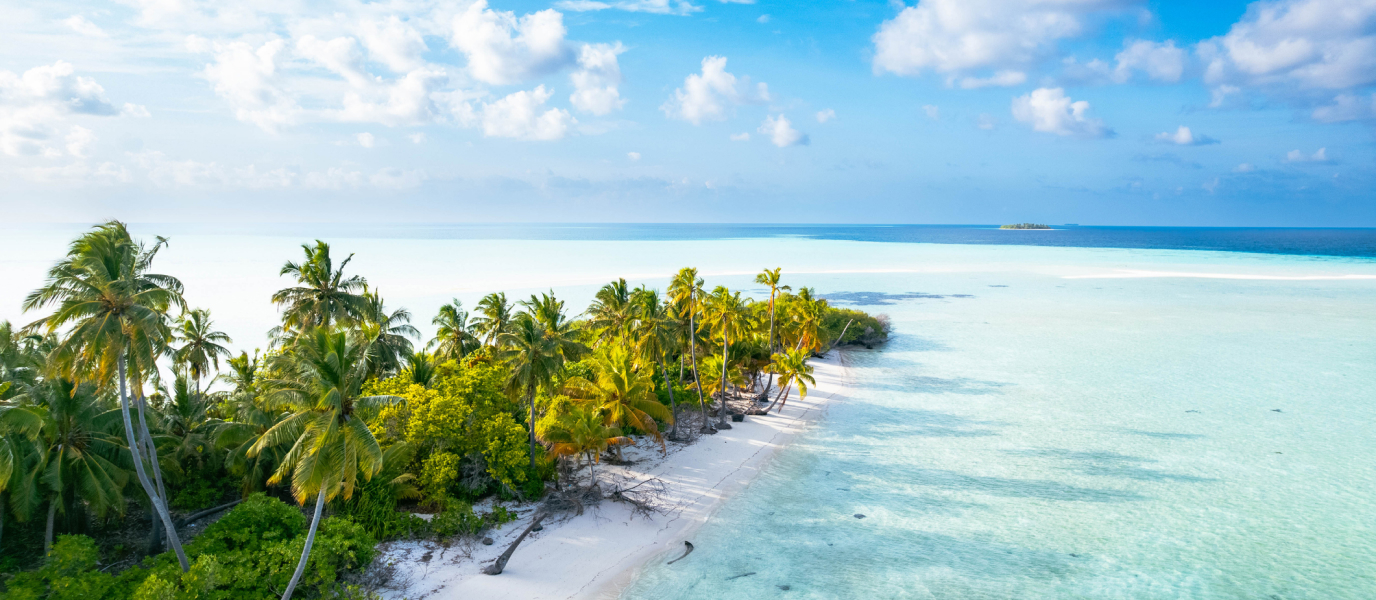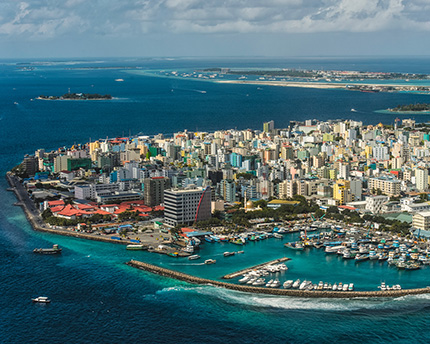Featuring a double chain of 26 atolls in the heart of the Indian Ocean, with 1192 islands, although only about 200 are inhabited, the Maldives is a magical place. A tiny collection of green dots dotted on an endless blue canvas.
In recent years, this wonderful island paradise has become a sought-after destination for all types of travellers, from those trying to get away from the beaten track to those looking to get in touch with nature, especially underwater, as the waters of the Maldives are home to more than 2,000 different species of marine life that are truly out of this world. In any case, it’s worth bearing in mind these handy tips when planning a trip to the Maldives.
- Island hopping: airport transfers
- Under the tropical sun: always well protected
- Local culture: a colourful archipelago
- Accommodation in Maldives: a stay in paradise
- Weather and the rainy season: when to travel to the Maldives
- Travel and health insurance: no sense in taking risks
- Euro, dollar, or rufiyaa? Local currency and money management
- Where to stay in the Maldives
Island hopping: airport transfers
By the time you arrive in the Maldives, the accommodation you have chosen in advance will usually have arranged for someone to meet you at Velana International Airport (the main gateway to the country, located in Malé, the archipelago’s capital) and escort you on the final leg of your journey. In any case, be sure to ask about this when booking your accommodation.
There are essentially two main options for island hopping: a fun speedboat ride allowing you to enjoy the cool sea breeze, or a seaplane ride over the fantastic Maldivian archipelago. There’s also a third, less common option, which is to take an internal flight to any of the 18 domestic airports on the various islands, and from there, of course, take a speedboat to your final destination. Or use the national ferry network. In any case, you should always make sure that this is taken care of when you make your travel arrangements.
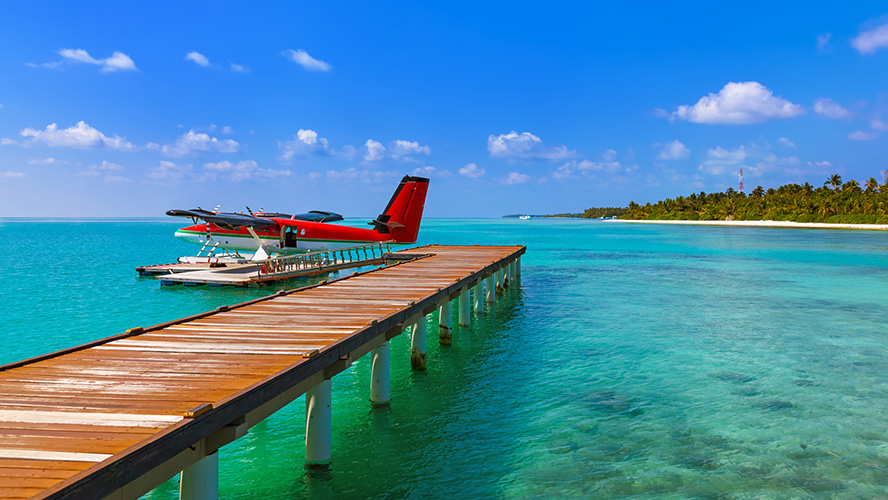
Under the tropical sun: always well protected
The Maldives can certainly be described as “a wonderful sun and sand destination”; there are plenty of beaches and, above all, plenty of sunshine. It’s home to an unrelenting tropical sun that makes it necessary to take certain precautions. It’s not rocket science; just wear good sunscreen (preferably eco-friendly/biodegradable, so as not to affect the delicate marine life), a hat or cap, dark sunglasses…and, well, use a bit of common sense.
It may even be a good idea to wear light clothing (such as cotton or linen) with long sleeves to protect your skin during long periods in the sun (you can end up with a significant case of sunstroke even with some cloud cover). As well as T-shirts with UV protection for water activities, where you are also often fully exposed to the unforgiving Maldivian sun. And, of course, you should always stay well hydrated. Dehydration is one of the most common problems in tropical and subtropical climates.
Local culture: a colourful archipelago
The Maldives is a fascinating destination, and along with its wonderful beaches and vibrant marine life, the local culture is an irresistible attraction. From the bustling capital city of Malé to the rest of the atolls, the Maldives offers all kinds of experiences.
You can visit beautiful mosques and interesting museums that are home to the legacy of age-old civilisations. Or landmarks such as Republic Square and the Presidential Palace. The handicrafts (items made of coconut fibre, lacquered wood, wicker, woven rugs, shells, among others) are also a good reflection of the cultural diversity of these islands, as well as the popular festivals, the music, the most traditional dances (accompanied by big Bodu Beru drums), and colourful traditional costumes. Throughout the archipelago you can enjoy the many opportunities that arise from the country’s culture and history.
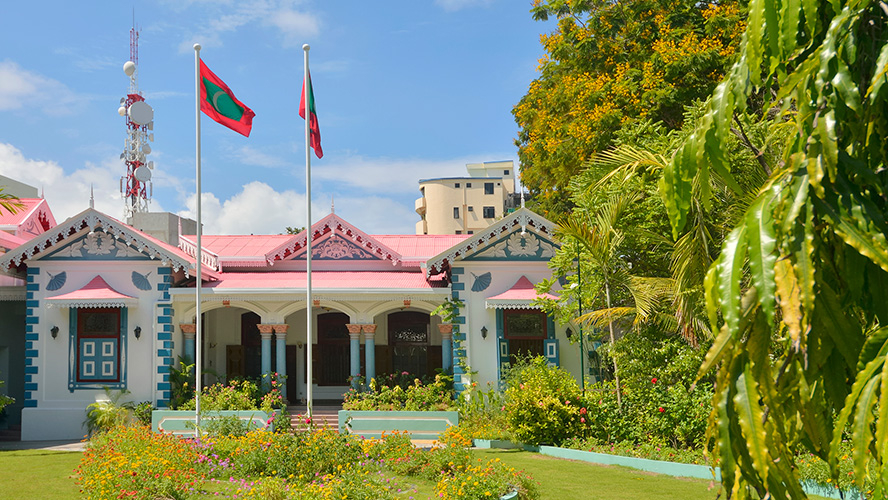
The cuisine, of course, deserves a special mention. Whether in the local markets or in world-class restaurants, the archipelago offers a feast of flavours, with ingredients and recipes from all corners of the Indian Ocean and beyond. Spicy touches from India and Sri Lanka, some smoked foods, rice from Asia, African tubers, lots of coconut (such as coconut oil, coconut milk, and grated coconut) and, of course, fish and seafood of all kinds.
Accommodation in Maldives: a stay in paradise
The Maldives is a “well-oiled” tourist destination and therefore has something to suit all tastes and budgets (although it’s still a relatively expensive place). The main islands and most populated towns offer everything from small boutique hotels to lodges and guesthouses surrounded by the rich local culture.
Of course, most appealing to visitors spending a few days in the archipelago is usually one of its many resorts or tourist complexes. They range from the most affordable ones, located on some of the inhabited islands, to luxury resorts on private islands. A very common sight is the ever instagrammable Water Villas (the typical, glamorous villas perched above the crystal-clear waters of the Indian Ocean) that can be found at the best resorts in the Maldives. In any case, hospitality is certainly a hallmark of the local identity.
Weather and the rainy season: when to travel to the Maldives
The archipelago has a warm and sunny climate all year round. However, from May to October, the wetter southwest (hulhangu) monsoon (typical seasonal wind) usually treats visitors its typical moderate to heavy rains.
The dry northeast monsoon (iruvai) calms the waters, opens the skies and “cools” the atmosphere a little between November and April (high season in the Maldives). Nevertheless, annual temperatures on this tropical island paradise range from 26 to 32 degrees Celsius and rarely fall below 25 degrees.
Travel and health insurance: no sense in taking risks
As in any non-EU country, the European Health Insurance Card isn’t valid, so we recommend that you travel with adequate health insurance. This makes it possible to deal with any unforeseen events (general cover, sports, diving, COVID-19, repatriation, etc.) and, of course, to avoid having to pay hefty medical expenses.
Moreover, most resorts offer medical assistance, of varying degrees, and each atoll has at least one hospital, allowing for medical needs to be met should the need arise.
Euro, dollar, or rufiyaa? Local currency and money management
The official currency is the Maldivian Rupee or Rufiyaa, although US Dollars and Euros are widely accepted at resorts and tourist spots. Of course, major international credit cards are generally welcome in most shops.
In this regard, the Maldives is a fairly expensive destination, so it’s important to plan for certain expenses beyond accommodation (which is usually paid for in advance). Especially if you plan on practising water activities, visiting other islands, eating out, or going shopping. Of course, things tend to be a bit cheaper on the inhabited islands than in the resorts, but since almost everything is imported, prices never drop too much. In any case, it all depends on the season (high season is obviously more expensive) as well as your plan. If you’re dining at a resort or going on a diving or snorkelling expedition, you can pay by card; if you plan to buy some handicrafts in a small Malé shop or eat in a more traditional restaurant, you might be better off using local currency (there are ATMs and exchange bureaus at various points on the inhabited islands).
Where to stay in the Maldives
Making the most of all the wonders that this fantastic Indian Ocean destination has to offer is made easier at Barceló Whale Lagoon Maldives (https://www.barcelo.com/en-es/barcelo-whale-lagoon-maldives). This exclusive Barceló Group five-star resort is located on the South Ari Atoll on the private island of Bodufinolhu, just 50 km from Malé.
Barceló Whale Lagoon Maldives has a hundred or so villas of different types, including 30 fantastic Water Villas with outdoor terraces and 63 Beach Villas, among other options. Of course, there are also several restaurants, a wellness centre (featuring a spa, sauna, and gym), two swimming pools, and a lively beach club. There are a host of relaxing experiences on offer in a chic beach atmosphere.























































